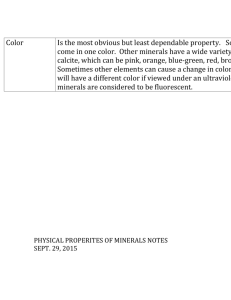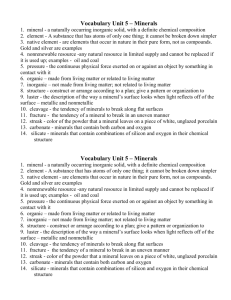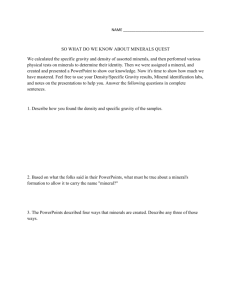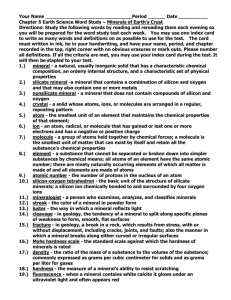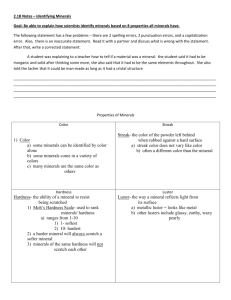Mineral I.D. Lab
advertisement
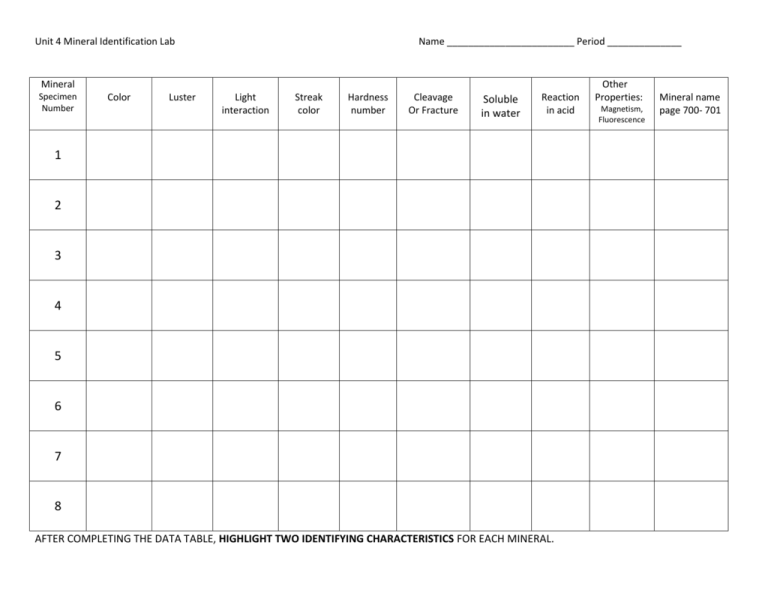
Unit 4 Mineral Identification Lab Name ________________________ Period ______________ Mineral Specimen Number Color Luster Light interaction Streak color Hardness number Cleavage Or Fracture Soluble in water Reaction in acid 1 2 3 4 5 6 7 8 AFTER COMPLETING THE DATA TABLE, HIGHLIGHT TWO IDENTIFYING CHARACTERISTICS FOR EACH MINERAL. Other Properties: Magnetism, Fluorescence Mineral name page 700- 701 1. What two properties distinguish sulfur from other minerals? 2. Some minerals are magnetic. What element in the mineral is the cause? 3. Color is an NOT a reliable property for identifying minerals. Give an example of a mineral that has many colors. 4. Which of your minerals is so hard that it can scratch the streak plate (instead of leaving a streak)? 5. Sometimes pieces of minerals are added to different kinds of cleaners to make them gritty so they can scrub off really tough scum. The idea is that the mineral will scrub off the scum without scratching the surface that is being cleaned. Would it be a good idea to put quartz in a cleaner to clean windows? Explain. What mineral would work well? Explain. 6. 7. 8. Many expensive saw blades are coated with diamond dust. Using Mohs Hardness Scale, explain what type of materials they are used to cut through and why. Can a mineral have a color streak that is different from the color of the mineral? Give an example. Explain why the mineral mica has perfect 1-direction cleavage. Draw a particle diagram to show this. 9. Things that smell usually have loosely bonded atoms that come off easily. Which of your minerals had a distinctive smell? What was the hardness of that mineral? Which of your minerals should not have loosely bonded atom thus no smell? 10. Some buildings are made of limestone. Limestone contains a lot of mineral #4. What would happen to the building if it was located in an area with a lot of acid rain? (pg. 379) 11. If a mineral is opaque, doesn’t shine, and doesn’t look like a metal, what word might be used to describe its luster? Name a mineral from your samples that fit that description. 12. How could you prove that a diamond is harder than quartz? 13. How can you determine if a mineral has cleavage or fractures? Describe what each would look like. 14. Minerals that contain metals like iron or magnesium are dark colored. Which of your minerals probably contains iron? .

